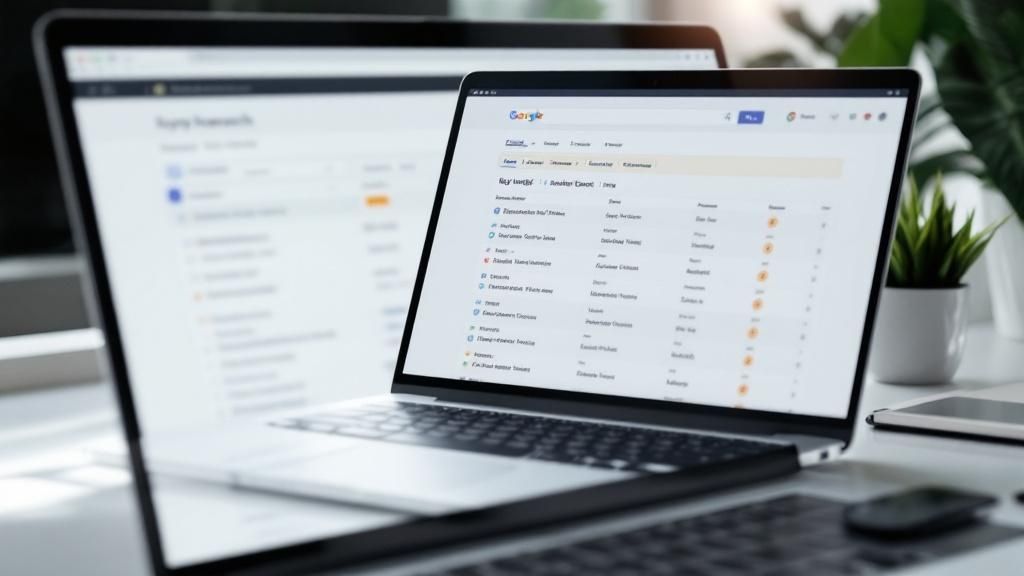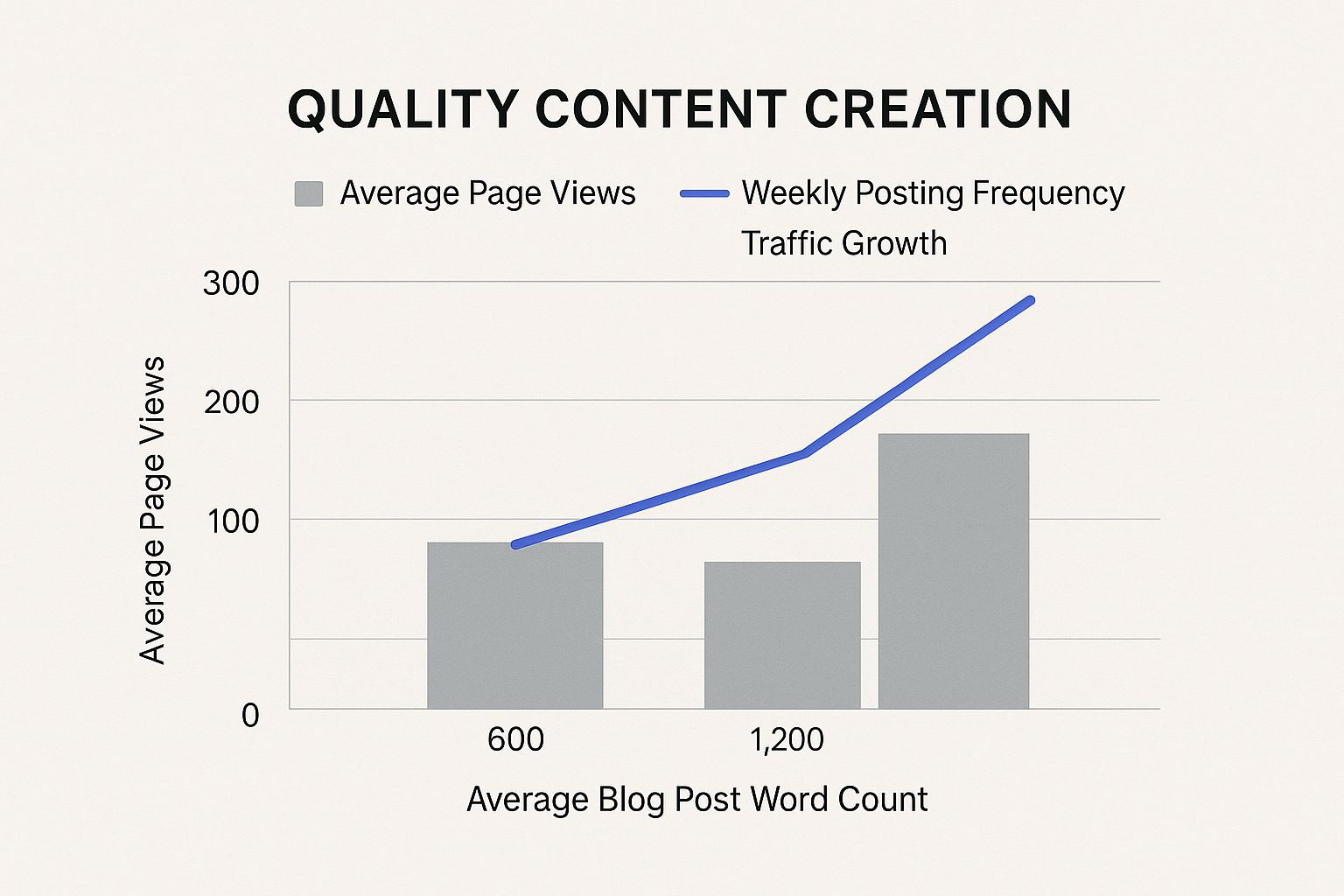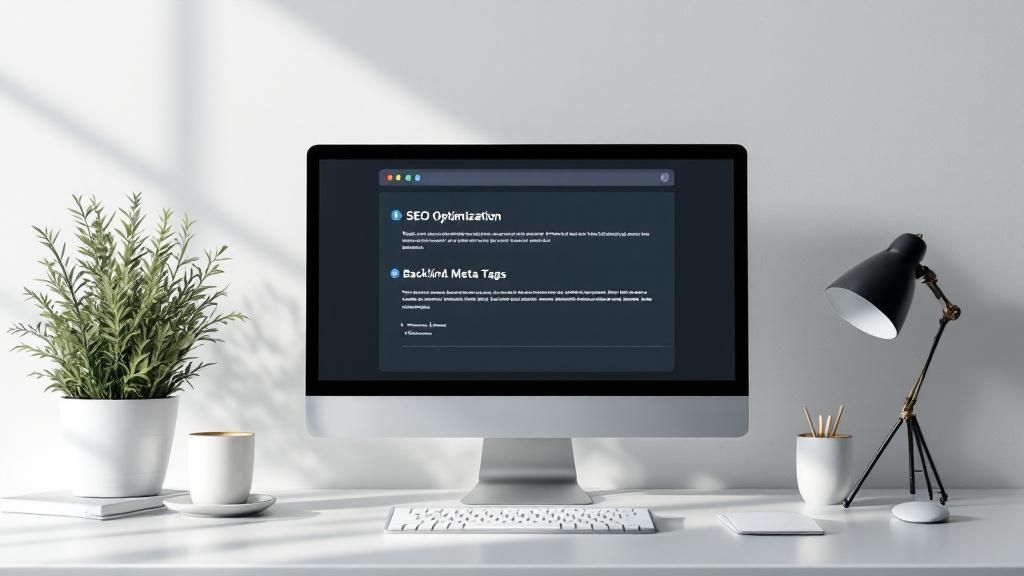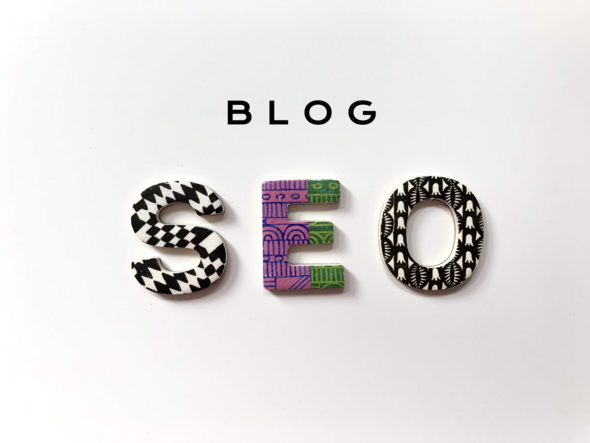Understanding Today's Competitive Blogging Reality

The blogging world is a crowded space. Think of it like a bustling marketplace, full of voices vying to be heard. Simply having a blog and posting isn't enough. You need a real understanding of the competitive landscape to improve blog traffic.
This competitive environment demands a strategic approach. Knowing your niche and understanding your audience is crucial. This means knowing what topics resonate with your readers and presenting information in a way that captures their attention.
The sheer number of blogs highlights this competitive reality. Over 600 million blogs existed worldwide in 2023, with 7.5 million blog posts published every single day. Find more detailed statistics here. This density requires effective search engine optimization (SEO) and compelling content to attract and retain readers. Standing out is more important than ever.
Navigating the Challenges of the Modern Blogosphere
One of the biggest challenges is the ever-changing world of SEO. Search engine algorithms are constantly being updated, requiring bloggers to adapt their strategies to remain visible. This adds another layer of complexity to increasing blog traffic. Understanding these algorithms and how they prioritize quality content is key.
Another challenge is grabbing and holding reader attention. With so much content competing for their time, you need to create truly engaging material. This goes beyond simply presenting information. It means focusing on storytelling, strong visuals, and interactive elements. It also means understanding what motivates readers to share content and participate in your blog's community.
Identifying Opportunities in a Crowded Market
Even in a saturated market, there are ways to create a successful blog. One key is niche specialization. Focusing on a specific area, even within a broader category, allows you to target a dedicated audience. For example, food blogs represent 42.8% of all high-traffic blogs, proving the effectiveness of focusing on a specific interest.
Using multimedia can also set you apart. Adding video or audio content can significantly improve user experience and boost engagement. In fact, 82% of bloggers report positive results from incorporating multimedia into their content. Diversifying your content formats is a smart way to attract a wider audience and improve blog traffic.
Mastering SEO That Actually Drives Growth
Search engine optimization (SEO) is key to attracting readers. The SEO landscape has changed significantly. It's no longer about keyword stuffing and generic meta descriptions. This section explores modern SEO strategies that successful bloggers use for consistent, sustainable growth. We'll examine the differences between growing blogs and those with declining traffic, using real-world data. You'll learn practical keyword research methods, on-page optimization tactics, and content structure approaches that engage readers and satisfy search engine algorithms.
Keyword Research: Uncovering Hidden Gems
Effective keyword research is the bedrock of successful SEO. It's all about understanding your audience's search habits and aligning your content accordingly. Instead of focusing on highly competitive keywords, consider exploring long-tail keywords. These are longer, more specific phrases. For example, instead of targeting "blog traffic," try "how to increase blog traffic for lifestyle blogs." Long-tail keywords often have less competition, which can help your content rank higher in search results.
On-Page Optimization: Sending the Right Signals
On-page optimization makes your content easy to understand for both search engines and readers. This involves using relevant keywords in a natural, conversational way throughout your content. Optimize your title tags and meta descriptions to accurately reflect the post's content and encourage clicks. Structuring your content with clear headings (H2s, H3s, etc.) and bullet points enhances readability. This structured approach also helps search engines understand the hierarchy of information within your content.
Content Structure: Engaging Readers and Algorithms
Creating high-quality, engaging content is essential for attracting and retaining readers. Craft compelling narratives, provide valuable insights, and use visuals like images and videos. A good resource for further reading is How to master blog post SEO.
The infographic below illustrates the connection between content quality, posting frequency, and page views:

As the infographic shows, longer, more comprehensive posts tend to generate more page views. Consistent posting also contributes to overall traffic growth. However, remember that quality trumps quantity. Another helpful resource is How to create successful long-form content.
The following table summarizes key SEO differences between growing and declining blogs based on a recent study. It highlights the strategies that contribute to success and those that may be hindering performance.
SEO Strategy Comparison: Growing vs Declining Blogs A comparison of SEO approaches used by blogs experiencing growth versus those seeing traffic decline
| Strategy Element | Growing Blogs (62.8%) | Declining Blogs (36.4%) | Impact Level |
|---|---|---|---|
| Keyword Research | Focus on long-tail keywords and user intent | Rely on generic, high-competition keywords | High |
| On-Page Optimization | Consistent use of relevant keywords, optimized title tags and meta descriptions | Poor keyword integration, neglected meta descriptions | High |
| Content Structure | Engaging narratives, valuable insights, clear headings and visuals | Thin content, lack of structure, poor readability | High |
| Content Frequency | Regular posting schedule | Inconsistent or infrequent posting | Medium |
| Content Quality | High-quality, original content | Duplicate or low-quality content | High |
Key takeaways from this comparison reveal that growing blogs prioritize user intent through long-tail keyword research, optimize on-page elements for both search engines and readers, and produce high-quality content regularly. Declining blogs often struggle with keyword targeting, neglect on-page optimization, and lack consistency and quality in their content strategy.
Optimizing your blog content remains crucial for increasing traffic. A recent study indicated that 62.8% of content marketers saw year-over-year traffic growth, while 36.4% experienced a decline. Explore this topic further. This difference highlights the importance of adapting content to satisfy both users and search engines. WordPress blogs alone generated nearly 14 billion page views in 2025. However, with a projected traffic decline predicted by 65.8% of content marketers in the next five years, staying ahead requires continuous refinement of SEO techniques and a focus on content quality.
Using AI Tools Without Losing Your Human Touch

Artificial intelligence (AI) is transforming content creation. Think of it as a powerful assistant, helping with research, writing, and even promotion. But access to these tools isn't a magic bullet. This section explores how to effectively use AI to boost your blog traffic, all while keeping the essential human element that truly connects with readers. We'll examine the critical difference between bloggers who leverage AI for impactful results and those who struggle, even with access to the same technology.
Finding the Balance: AI and Authenticity
The secret lies in striking the right balance between AI assistance and your authentic voice. AI is a powerful engine, but you're the one steering the wheel. It can propel you forward, but you choose the destination and the journey. Using AI for tasks like keyword research, outlining, and even initial drafting frees you to focus on what truly matters: crafting resonant content. You might find this helpful: How to master SEO for your blog.
For instance, AI can analyze search trends and identify keywords related to "how to improve blog traffic." It can also structure your content for improved readability and SEO. But it's your unique perspective, your experiences, and your storytelling that truly set your blog apart.
Choosing the Right AI Tools for Traffic Growth
Not all AI tools are created equal. Some are excellent for short-form content, while others shine with long-form articles or SEO optimization. Understanding the strengths and weaknesses of various AI applications is key to maximizing their impact on your blog's traffic. Prioritize tools offering features like keyword research, content optimization, and competitor analysis for a real competitive advantage.
Maintaining Your Unique Voice in the Age of AI
One significant concern about AI in content creation is the potential loss of individuality. AI can generate remarkably human-sounding text, but it often lacks the nuance, personality, and emotional connection of a real person. This is where your human touch becomes invaluable.
Understanding AI's role in content creation is vital for increasing blog traffic. By 2025, a projected 70% of bloggers will use AI for drafting or enhancing content. This highlights the growing importance of technology in streamlining content production and boosting quality. However, despite this widespread adoption, only 20% of bloggers report significant results, a decline from 30% five years ago. Discover more insights about blogging statistics. This reveals a key takeaway: AI alone isn't enough. Bloggers must focus on creating unique, high-quality content that resonates with their audience, while using AI to optimize workflow and strategy. Combining AI-driven efficiency with human creativity is essential for success. It's not about quantity, but quality and authenticity.
Integrating AI Effectively: Tips and Techniques
Refine AI-Generated Content: Never just publish raw AI output. Edit and refine it to reflect your unique style and voice. Inject your personality, add personal anecdotes, and ensure the content aligns with your brand message.
Focus on Storytelling: AI can help you gather information and structure your thoughts, but you're the storyteller. Use AI as support, not a replacement for your creative process.
Prioritize User Experience: AI can optimize for search engines, but don't forget the human reader. Ensure your blog is user-friendly, easy to navigate, and provides a positive reading experience.
Embrace Experimentation: The AI landscape is constantly evolving. Be open to exploring new tools and techniques. What works for one blogger might not work for another, so find what best suits your needs and style.
By strategically integrating AI into your workflow, you can elevate your blog traffic without sacrificing the human touch that cultivates a loyal audience.
Creating Content That Readers Actually Share
Attracting readers to your blog takes more than just optimizing for search engines. It requires creating content that resonates with real people, content they'll want to share with their networks. This section explores how to turn casual visitors into engaged readers and active promoters of your blog. We'll delve into the elements that make content shareable, helping you boost your traffic organically. For those just starting out, you might find this helpful: How to master content creation for beginners.
Storytelling: Making Complex Topics Accessible
One of the most powerful ways to connect with readers is through storytelling. Think of your blog posts as narratives with a beginning, a middle, and an end, not just as collections of information. Even complex topics become more accessible and memorable when woven into a compelling story.
Instead of simply listing product benefits, for example, share a customer success story that shows those benefits in action. This creates an emotional connection with your audience, making them more likely to remember – and share – your content.
Structuring for Readability: Keeping Readers Engaged
In-depth content is valuable, but it needs to be presented in a digestible format. Break up large chunks of text with headings, subheadings, bullet points, and visuals. This dramatically improves readability and keeps readers engaged.
Think of it like building a house. A solid foundation is essential, but no one wants to live in a concrete box. Walls, windows, and decor turn it into a home. Similarly, structure and visuals enhance the reader's experience, making your content more inviting and shareworthy.
Multimedia: Enhancing User Experience
Visual elements like images, videos, and infographics significantly enhance the user experience. However, avoid adding multimedia just for the sake of it. Every element should have a purpose, whether it's illustrating a point, adding context, or breaking up the text.
Think of it like seasoning a dish. Too much can overpower the flavor, but the right amount enhances it. Use multimedia strategically to enrich your content, making it more visually appealing and encouraging shares and return visits.
Understanding the Psychology of Sharing
Why do people share content? They often do so to connect with others, offer value to their network, or express their own identity. Content that evokes strong emotions, provides practical advice, or offers unique insights is more likely to be shared.
This means crafting content that resonates on a personal level is crucial for driving social sharing and increasing blog traffic. One blogger reported a significant increase in pageviews—from 12,000 to 100,000 in just 18 months—after implementing a consistent content marketing plan. They focused on platforms like Pinterest, email lists, and Facebook pages, tailoring content to each specific audience. This demonstrates the power of understanding your audience and connecting with them where they are.
Smart Promotion Beyond Just Posting And Hoping

Creating excellent content is essential, but it's only the first step. Getting that content in front of the right audience requires a well-defined promotional strategy. This isn't about randomly sharing links; it's about strategically expanding your reach and fostering real engagement. This means understanding your target audience and where they spend their time online.
Social Media Tactics That Actually Drive Traffic
Social media can be a powerful tool for driving traffic, but it demands a nuanced approach. Simply posting links isn't enough. Instead, focus on crafting engaging content tailored to each platform.
For example, visual content performs well on Pinterest. Thought-provoking discussions are better suited for Facebook groups. Treat each platform as a distinct community with its own unique culture.
Consider the psychology of sharing. People share content that resonates with them, offers practical value, or reflects their identity. Create social media posts that spark curiosity, offer helpful advice, or tell compelling stories.
Email Marketing: Building Loyalty and Driving Repeat Visits
Building an email list is one of the most valuable assets for any blogger. Your subscribers have opted in to receive your updates, demonstrating a genuine interest in your content. This makes email marketing incredibly effective for promoting new posts and encouraging return visits. Learn more about increasing blog traffic.
Avoid simply sending a list of your latest posts. Instead, offer exclusive content, personalized recommendations, or behind-the-scenes insights into your blogging process. This nurtures a sense of community and strengthens your connection with subscribers.
Networking: Expanding Your Reach Authentically
Networking with other bloggers and influencers can significantly broaden your reach. This isn't about asking for backlinks; it's about building authentic relationships. Collaborating on guest posts, participating in online communities, or engaging with others' content can foster valuable connections.
This genuine approach can introduce you to new audiences and position you as a trusted voice. Building a supportive network benefits everyone involved. It can lead to increased visibility, valuable feedback, and new opportunities. You might be interested in how to master blogging success.
Avoiding Common Promotion Mistakes
One common mistake is prioritizing promotion over content quality. Promotion amplifies your reach, but it can't make up for subpar content. Another mistake is spreading your efforts too thin across numerous platforms. It's more effective to focus on a few key channels where your audience is most active.
Finally, avoid being overly promotional. Focus on providing value and building genuine connections. This builds trust and encourages long-term engagement, leading to sustainable growth. The following table shows a breakdown of average traffic contribution and conversion rates from different promotion channels, as well as estimated time investment and ROI rating:
To better understand the effectiveness of different promotional strategies, let's analyze their performance:
| Traffic Source | Average % of Total Traffic | Conversion Rate | Time Investment | ROI Rating |
|---|---|---|---|---|
| Social Media | 40% | 2% | High | Medium |
| Email Marketing | 30% | 5% | Medium | High |
| Networking | 20% | 3% | Medium | Medium |
| Other | 10% | 1% | Low | Low |
As the table demonstrates, while social media brings in a large percentage of traffic, email marketing boasts a significantly higher conversion rate. This highlights the importance of a balanced promotional approach, focusing on both reach and engagement.
Building a successful blog requires more than just writing; it requires a strategic promotional plan. By adopting a comprehensive approach, you can increase traffic and cultivate a loyal readership.
Tracking What Matters And Optimizing For Growth
Improving blog traffic isn't about luck; it's about making smart choices based on accurate data. This means looking beyond vanity metrics like pageviews and focusing on the numbers that truly show growth. This section explains how to identify these key metrics, set realistic goals, and refine your content strategy for constant improvement.
Identifying Key Performance Indicators (KPIs)
Pageviews offer a glimpse of your blog's reach, but they don't tell the whole story. Engagement metrics like average session duration, bounce rate, and comments demonstrate how readers interact with your content. Are they sticking around to read or leaving quickly? Conversion indicators like email sign-ups and product purchases, if relevant, show whether your content leads to action.
For instance, a high bounce rate could indicate a mismatch between your content and readers' expectations, suggesting a need for improvement. Longer session durations, combined with good engagement, indicate that your content is valuable and readers find it meaningful.
Setting Realistic Growth Targets
Setting ambitious goals is important, but unrealistic targets can be discouraging. Begin with attainable milestones and gradually increase them. For example, aiming for a 10% increase in traffic over a month is more realistic than anticipating a sudden jump of 100%. See our guide on content performance metrics for a deeper understanding of setting effective goals.
Optimizing Your Content Strategy
Once you know which metrics are most important, you can optimize your content strategy. Identify your top-performing posts and analyze what makes them successful. Is it the topic, the format, or the promotion strategy? One blogger recorded increasing pageviews from 12,000 to 100,000 in just 18 months by concentrating on consistent content creation and strategic promotion on various platforms. This highlights the effectiveness of a data-driven approach.
Regular Performance Reviews and Optimization
Regularly reviewing your blog's performance is essential for long-term growth. Set a schedule for analyzing your KPIs and finding areas for improvement. This could be weekly, monthly, or quarterly, depending on how often you blog and your goals. This consistent review lets you track progress, see what’s working, and adjust your strategy as needed.
Modifying your content calendar based on data can significantly impact your results. If certain topics connect with your audience, creating more content on those subjects can further boost engagement and traffic. Likewise, finding and updating underperforming content can refresh older posts and increase their contribution to overall traffic growth. This iterative process of review, analysis, and optimization ensures continuous progress.
Your Next Steps For Immediate Traffic Growth
This section provides a roadmap for implementing the strategies discussed earlier to improve blog traffic. We'll outline prioritized action items, realistic timelines, expected outcomes, and guidance for troubleshooting along the way. This personalized action plan will align with your blog's specific goals and provide sustainable strategies for long-term growth.
Phase 1: Foundational SEO (Weeks 1-4)
This initial phase focuses on optimizing your blog's technical SEO and content. A strong foundation is key to long-term success.
Keyword Research and Implementation: Discover long-tail keywords relevant to your niche using tools like AnswerThePublic. Integrate these keywords naturally into your existing content and when creating new blog posts. Expected outcome: Improved search engine visibility and a gradual increase in organic traffic.
On-Page Optimization: Review your title tags, meta descriptions, and header tags. Ensure they accurately reflect your content and include relevant keywords. Expected outcome: Higher click-through rates from search engine results pages (SERPs).
Internal Linking: Link relevant posts within your blog. This improves user navigation and distributes link authority. Expected outcome: Increased page views and improved user engagement.
Phase 2: Content Enhancement and Promotion (Weeks 5-8)
This phase centers on creating engaging, shareable content and promoting it effectively to reach a wider audience.
Content Audit and Refresh: Identify your top-performing content. Update it with fresh information, compelling visuals, and optimized keywords. Expected outcome: Renewed interest in older content, leading to more traffic and social shares.
Multimedia Integration: Incorporate visuals such as images, videos, and infographics to enhance user experience and encourage social sharing. Expected outcome: Improved content engagement and shareability across different platforms.
Strategic Social Media Promotion: Focus your efforts on the social media platforms where your target audience is most active. Tailor your content to each platform, focusing on valuable insights and engagement-driving content. Expected outcome: Increased brand visibility and website traffic from social media channels.
Phase 3: Community Building and Analysis (Weeks 9-12)
This final phase emphasizes building a community around your blog and analyzing your results for continuous improvement and growth.
Email List Building: Implement strategies to grow your email list. Offer exclusive content or lead magnets to entice sign-ups. Expected outcome: Direct access to a loyal audience to share new content and promotions.
Engagement and Community Building: Respond to comments, foster discussions, and build relationships with your readers. Expected outcome: Increased reader loyalty and a more active and engaged blog community.
Performance Monitoring and Analysis: Track key metrics like bounce rate, session duration, and conversion rates to identify areas for improvement. Expected outcome: Data-driven decision-making for continuous traffic growth and blog optimization.
Stop struggling to grow your blog. BlogMaker offers a comprehensive solution to simplify blog creation and management, from SEO optimization and custom design to newsletter integration and advanced analytics. Focus on creating great content, and let BlogMaker handle the technical complexities. Start building your dream blog today: Create Your Blog With BlogMaker
SEO–ready, Analytics, No–code.
Your Content Publishing Engine
Deliver your SEO–driven content!
Visit BlogMaker.app



